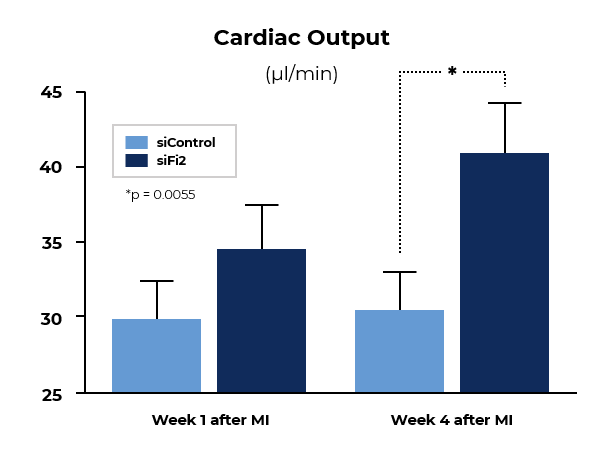Cardiac Tissue Repair
MicroCures is currently advancing a preclinical program investigating the therapeutic potential of siFi2 for cardiac tissue repair.
Preclinical studies have demonstrated that topical application of siFi2 immediately following induced myocardial infarction produced significantly improved revascularization, cardiac tissue repair, and recovery of heart function, as compared with controls.
In a preclinical study involving a mouse model of myocardial infarction, MicroCures scientists demonstrated that animals treated with siFi2 experienced significant improvement in cardiac output at four weeks post treatment as compared to control (p = 0.0055).
Additional study findings demonstrated reduced ischemia and improved blood supply in animals treated with siFi2 as compared to control. Furthermore, siFi2-treated animals experienced regeneration of the mycocardium and vasculature in their infarcted hearts.

Revascularization is the key to heart repair
The most critical element of cardiac tissue repair is revascularization following the injury, which in turn reduces ischemic necrosis and increase cardiac output. Importantly, the revascularization process relies upon the rapid and precise movement of endothelial cells to the infarction site. For this reason, MicroCures believes that siFi2 can play a therapeutic role in cardiac tissue repair by silencing the FL2 activity which naturally decelerates cell motility. This hypothesis is supported by research that has shown that siFi2 promotes neovascularization from embryonic hearts.

